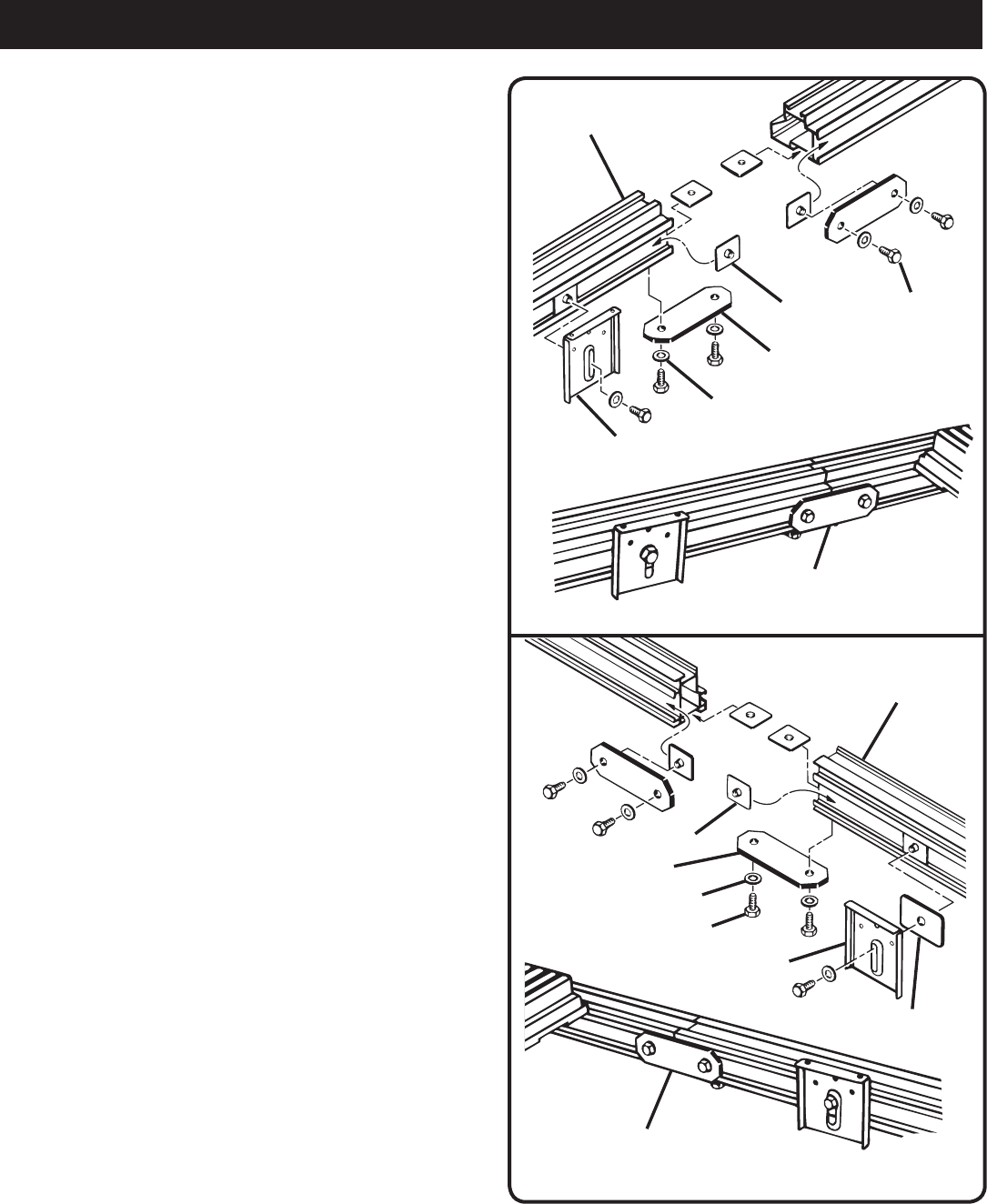
5
ASSEMBLY
Fig. 2
Fig. 3
CONNECTOR
TABLE BRACKET
FRONT
EXTENSION RAIL
WASHER
T-NUT
HEX BOLT
FRONT RAILS
SHOWN ATTACHED
REAR RAILS SHOWN
ATTACHED
CONNECTOR
T-NUT
WASHER
HEX BOLT
TABLE BRACKET
SPACER
REAR
EXTENSION RAIL
TO ATTACH FRONT EXTENSION RAIL
See Figures 2 and 4.
Remove end caps from right end of front rail on your
BT3000 table saw. See Figure 4.
Slide one of the T-nuts into bottom channel of front rail on
your saw. Slide a second T-nut into back channel of front
rail.
Attach one of the connectors provided to T-nut on bottom
of front rail and secure with a washer(5/16 in.) and a hex
bolt (5/16-18 x 1/2 in.). Finger tighten only.
Orient front extension rail so that it matches front rail of
your saw. Place two T-nuts in matching channels of front
extension rail.
Connect bottom T-nut to connector on front rail of your saw
and secure with a washer (5/16 in.) and a hex bolt (5/16
in. x 1/2 in.). Finger tighten only.
Attach a second connector to back channel of front rail and
front extension rail. Secure it to each T-nut with a washer
(5/16 in.) and hex bolt (5/16 in. x 1/2 in.). Finger tighten
only.
TO ATTACH REAR EXTENSION RAIL
See Figures 3 and 5.
The rear extension rail attaches to rear rail on your BT3000
table saw by repeating the above procedure for attaching
front extension rail. The only difference being the rear rail
has a different conguration. See Figure 3.
NOTE: There are several repetitive steps required for
assembling this kit. Please study and review illustrations
closely for clarication when asked to repeat a procedure.
After attaching rear rail extension to your saw you should now
have the front and rear extension rails attached to your saw
using four connectors, eight T-nuts, eight washers (5/16 in.),
and eight hex bolts (5/16 in. x 1/2 in.).
Using a 1/2 in. socket or the small wrench supplied with your
table saw, tighten all eight bolts securely. Assure the two rail
sets are straight before, during and after tightening.












